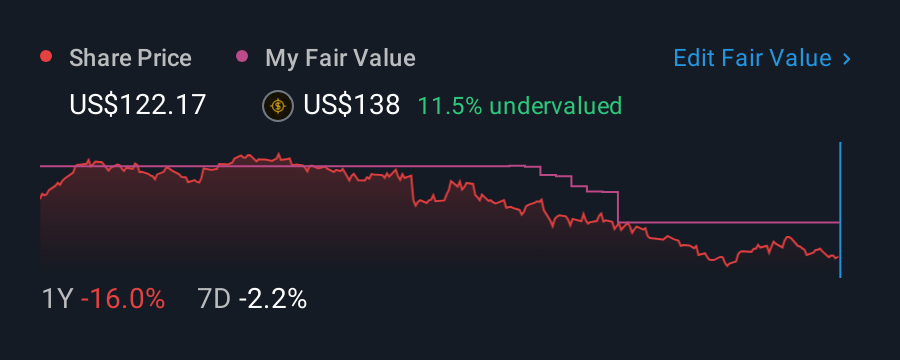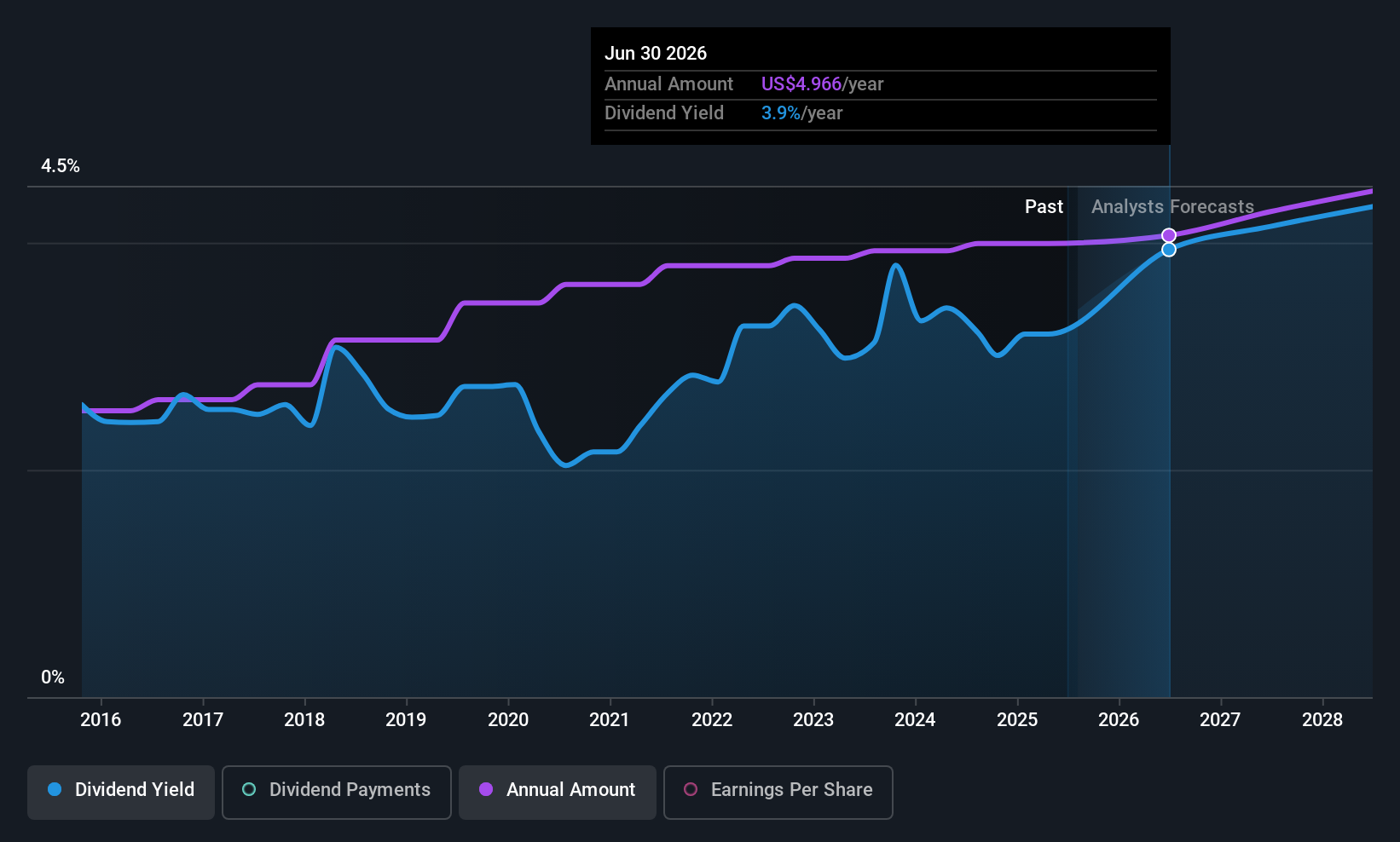

Some investors rely on dividends for growing their wealth, and if you're one of those dividend sleuths, you might be intrigued to know that The Clorox Company (NYSE:CLX) is about to go ex-dividend in just four days. The ex-dividend date is one business day before a company's record date, which is the date on which the company determines which shareholders are entitled to receive a dividend. The ex-dividend date is important as the process of settlement involves a full business day. So if you miss that date, you would not show up on the company's books on the record date. In other words, investors can purchase Clorox's shares before the 13th of August in order to be eligible for the dividend, which will be paid on the 29th of August.
The company's upcoming dividend is US$1.24 a share, following on from the last 12 months, when the company distributed a total of US$4.96 per share to shareholders. Last year's total dividend payments show that Clorox has a trailing yield of 3.9% on the current share price of US$126.08. If you buy this business for its dividend, you should have an idea of whether Clorox's dividend is reliable and sustainable. We need to see whether the dividend is covered by earnings and if it's growing.
Dividends are typically paid out of company income, so if a company pays out more than it earned, its dividend is usually at a higher risk of being cut. Clorox paid out more than half (75%) of its earnings last year, which is a regular payout ratio for most companies.
View our latest analysis for Clorox
Click here to see the company's payout ratio, plus analyst estimates of its future dividends.

Have Earnings And Dividends Been Growing?
Businesses with shrinking earnings are tricky from a dividend perspective. Investors love dividends, so if earnings fall and the dividend is reduced, expect a stock to be sold off heavily at the same time. So we're not too excited that Clorox's earnings are down 2.5% a year over the past five years.
Another key way to measure a company's dividend prospects is by measuring its historical rate of dividend growth. In the past 10 years, Clorox has increased its dividend at approximately 5.3% a year on average. That's interesting, but the combination of a growing dividend despite declining earnings can typically only be achieved by paying out more of the company's profits. This can be valuable for shareholders, but it can't go on forever.
Final Takeaway
Should investors buy Clorox for the upcoming dividend? We're not overly enthused to see Clorox's earnings in retreat at the same time as the company is paying out more than half of its earnings as dividends to shareholders. It doesn't appear an outstanding opportunity, but could be worth a closer look.
However if you're still interested in Clorox as a potential investment, you should definitely consider some of the risks involved with Clorox. In terms of investment risks, we've identified 1 warning sign with Clorox and understanding them should be part of your investment process.
If you're in the market for strong dividend payers, we recommend checking our selection of top dividend stocks.
Have feedback on this article? Concerned about the content? Get in touch with us directly. Alternatively, email editorial-team (at) simplywallst.com.
This article by Simply Wall St is general in nature. We provide commentary based on historical data and analyst forecasts only using an unbiased methodology and our articles are not intended to be financial advice. It does not constitute a recommendation to buy or sell any stock, and does not take account of your objectives, or your financial situation. We aim to bring you long-term focused analysis driven by fundamental data. Note that our analysis may not factor in the latest price-sensitive company announcements or qualitative material. Simply Wall St has no position in any stocks mentioned.